So, since it’s Sunday and I’ve been working very hard on the book, I fancied something indulgent, and settled on Pies de Parys, a meat pie from Pleyn Delit.
This pie, from Harleian MS 4016 (dating from around 1450) is the most non-vegetarian thing imaginable – the pie is a filling made of mixed ground meats (the recipe calls for you to “smite” your meat, a bit like an Old Testament God), mix them with eggs, wine, meat broth, minced currants and dates, plus some sugar, salt, and ground ginger. You then bake that in a pie. And blame the Parisians, presumably.
If the prospect of fruity meat freaks you out, look away now.
Pies de Parys
Take and smyte faire buttes of porke and buttes of vele togidre, and hit in a faire potte. And putte thereto faire broth and a quantite of wine, and lete all boile togidre til hit be ynogh; and then take hit fro the fire and lete kele a litel, and cast therto raw yolkes of eyren and poudre of gyngevere, sugre and salt, and mynced dates, reysyns of corence.
Make then coffyns of feyre past, and do it therynne, and kevere it & lete bake ynogh.
(from Harleian MS. 4016 in the British Museum)
I am learning to love the fantastic vagueness of medieval recipes: “A quantity of wine”, “Boil together for long enough”. You’re not told how much ginger or sugar to add; presumably you taste your way. As a rule, you are only ever given a definite quantity for a single thing in medieval recipes – one rabbit, or one chicken. The rest is “some” venison, or “faire buttes” of veal.
And when you think about it, it makes a kind of sense – the person writing the recipe doesn’t know how much veal or salt you have, or how many people you are feeding. The recipes are the products of a pre-scientific age, before widespread literacy. They are merely guides, rather than prescriptions.
Getting back to the matter in hand, Hieatt, Hosington and Butler recommend that the thing is done in two stages – the meat is cooked and drained and the liquid retained for the sauce, and then the pie made up later. This way, you can scoop off a lot of the fat from the liquid, as otherwise this would be a little full-on for modern sensibilities. In fact, the original recipe calls for you to let the meat “kele a litel”.
So that’s what I gone and done. It also gave me time to make inroads into what was left of the wine.
Cooking Instructions
You’ll need:
- 700g of ground meat, which can be veal, beef, or pork, providing you use at least two kinds. I used 250g of Aberdeen Angus and 450 of pork, because that’s what I had.
- 240ml white wine
- 240ml of meat broth (I used a gravy concentrate and water)
- 3 egg yolks (or one egg and one yolk, which is what I used)
- 370g shortcrust pastry
- 40g currants
- 40g chopped dates
- ½ tsp salt
- ½ tsp ground ginger
- ½ tsp sugar
- (optional) pinch of ground mace/ground cloves, pinch of white pepper
To make this delicious medieval treat:
1. Put your meat in a pot with the wine and stock/broth. Bring it to the boil and simmer for ten minutes. (Incidentally, at this point, it looked and smelled revolting):
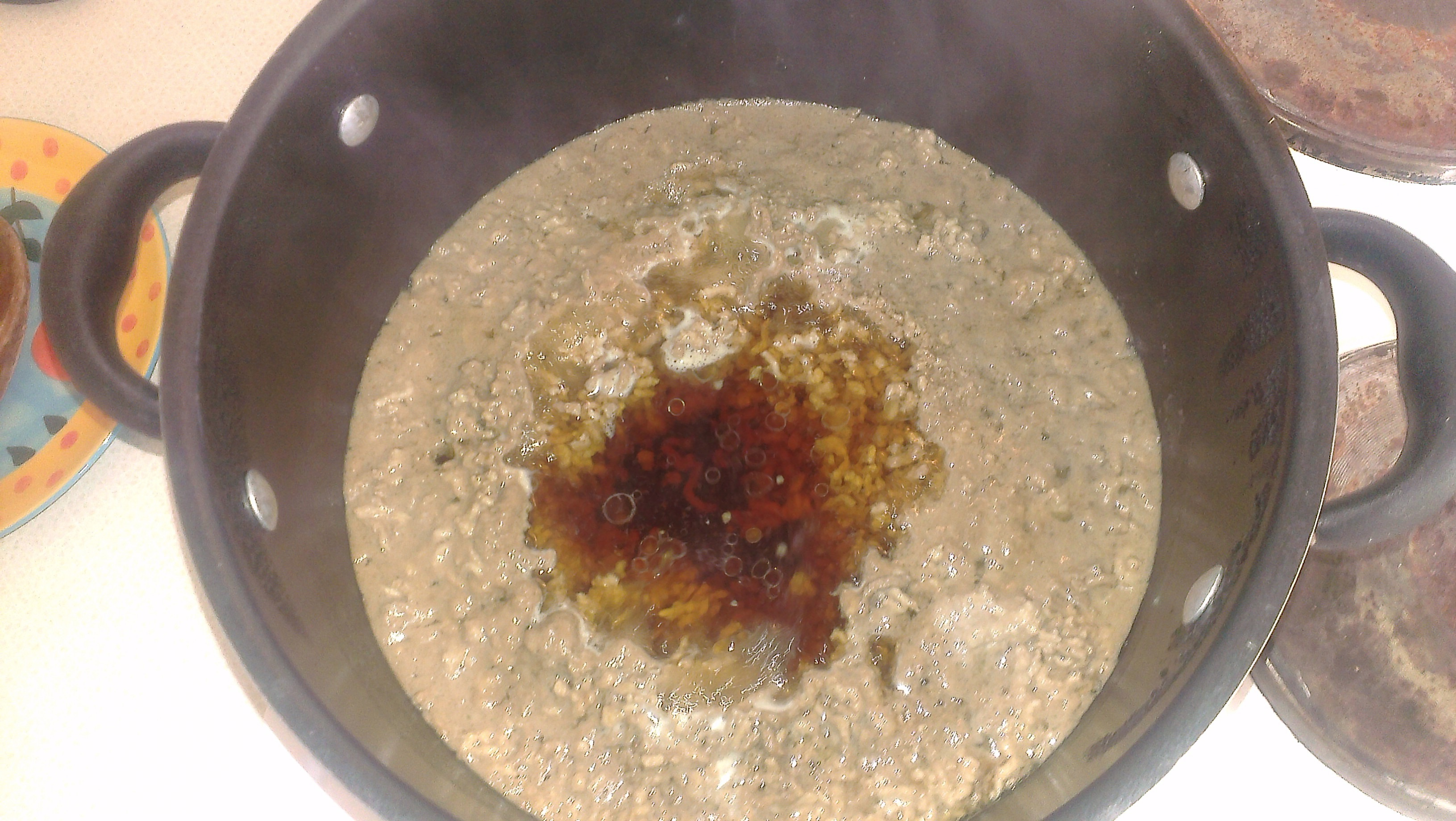
2. Drain the meat, reserving the liquid, and let both cool. The liquid can go in the refrigerator or even freezer, the better for separating the fat from the rest.
3. When you’re ready to hit up your fruity meat pie-shaped treat, preheat the oven to 180℃ (I have a fan oven so set mine to 160℃).
4. Take your rested pastry and line a 9 inch pie dish with it.
5. Take the cooking liquid from earlier, if you’ve let it set, and scrape the fat off the top (or not, if you prefer to live dangerously and/or unctuously). The liquid will have set into a kind of brown jelly.
Chuck the jelly into a largish pan and gently reheat it until it is good and hot but not quite boiling.
6. Meanwhile, toss the egg yolks (or egg and one yolk) into a bowl and beat them savagely. It’s the only way they’ll learn. Add a ladle of the not-quite-boiling meat juice to the egg mixture and beat it again, gently adding more of the juice until it’s all in there:
7. Throw in your meat, raisins, chopped dates, salt, ginger, and sugar, stirring after each one:
You’ll be left with a kind of pale brown sludge that smells strangely like herby sausages while you stir it and then like haggis if you put your nose up close to it.
8. Add any optional spices you like (I went for a pinch of ground mace and the lightest dusting of white pepper) and then pop the lot back into the pan.
9. Heat the mixture until it starts to thicken slightly. This was about 5-10 minutes for me. At this point, I didn’t dare taste it because I was still a little freaked out by how nasty it smelled when I first boiled the mince.
10. Put the mixture in your pie dish and cover with pastry as rustically as you like, which is synonomous with “authentic” and not at all a euphemism for half-arsed and lazy.
Even after the minimal thickening you’ve done, the mixture is a bit wet, so Hieatt, Hosington, and Butler recommend cutting steam holes in the top of the pie, which I did. Thin liquid dribbled out of them, grudgingly. Was not sure, at this point, how hungry I was.
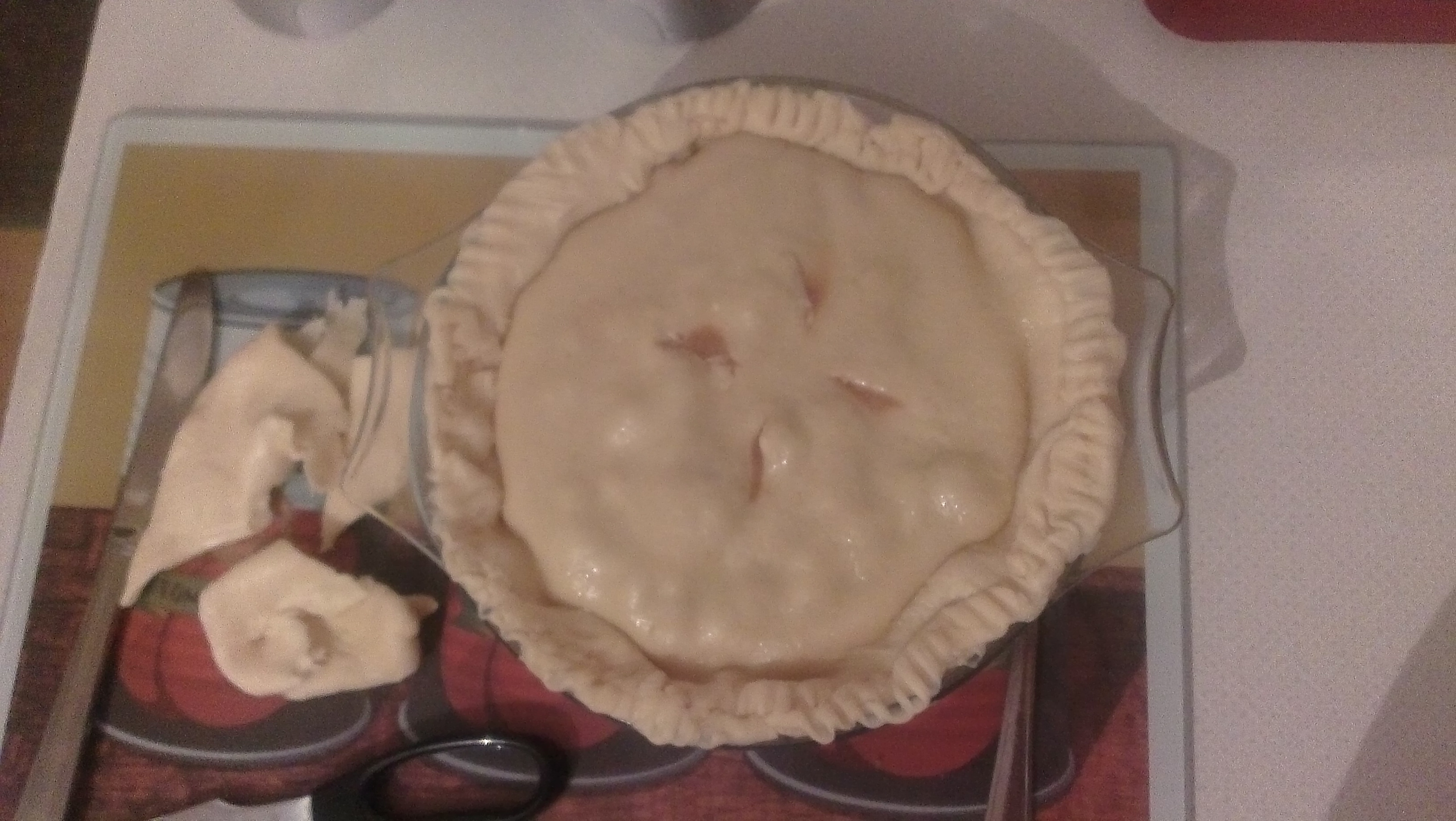
11. Put the pie in its sweaty, overstuffed glory into the oven for about an hour. About forty minutes in, I went into the kitchen which smelled just like I was baking fruit scones. Clearly there is some kind of Alchemical Mystery at work transforming this pie, and have no idea what the final thing will taste like – whether it will be ginger snaps or dead bodies or Big Macs.
12. Remove, serve. With a due sense of dread and foreboding. And also a backup plan in case of disaster:
In my case, this was a portion of oven chips:
Was it nice?
You know what? It was. Very strange, but quite delicious.
I ate that whole slice almost without noticing, ignoring the chips, as I pondered how I would describe the taste. The nearest I can come up with is a kind of Christmas cake, only made of meat, or a kind of spicy-sweet haggis that is not as peppery as the real thing usually is.
But all of that fails to take in the fact that it is very tasty – not too sweet or sour to be off-putting, You taste fruit, swollen with the cooking juices, and ginger and pastry, and the comforting porky savouryness of the mince.
It’s lovely, but I’m not sure I could serve it to people without warning because it is just so weird. But if you were having an adventurous dinner party with other ancient cooking enthusiasts, then yeah, definitely. Go wild.
In fact the authors of Pleyn Delit also give a variant for serving this pie in little individual tart shells as hors d’ouevres, so if you wanted something that dipped toes in the water without committing to the full sweet-meat thing in all its glory, that might be the way to go.
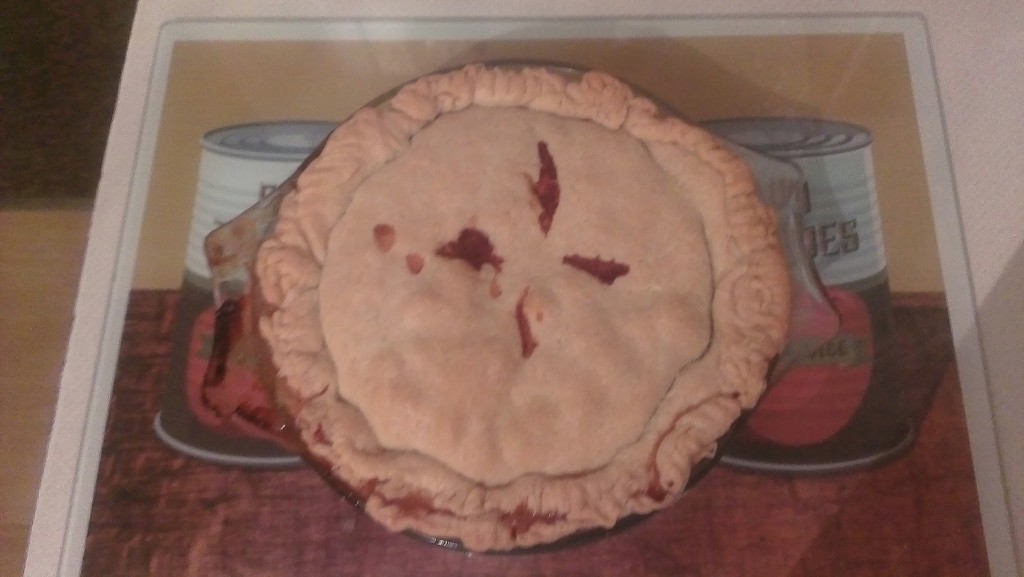
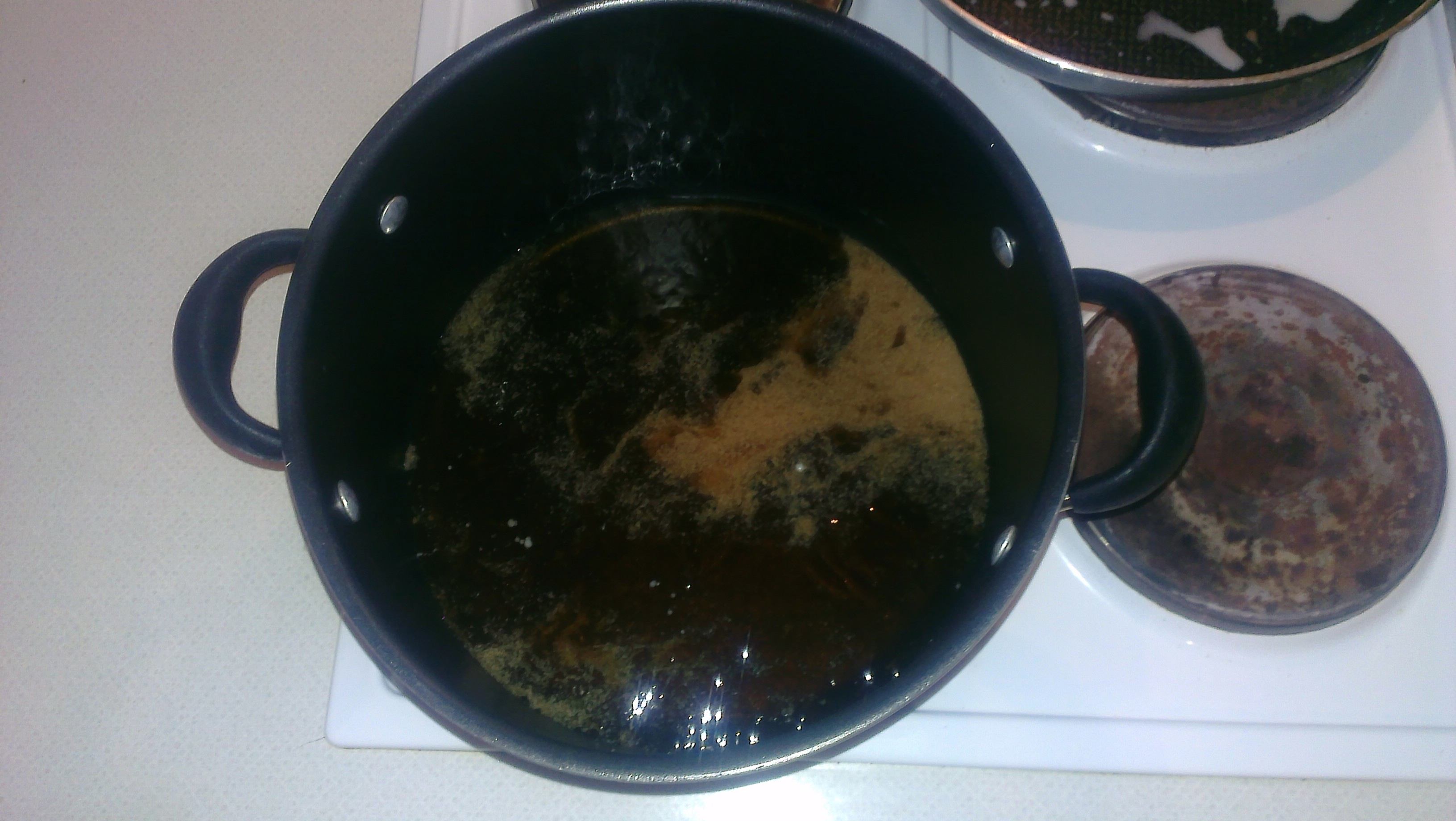
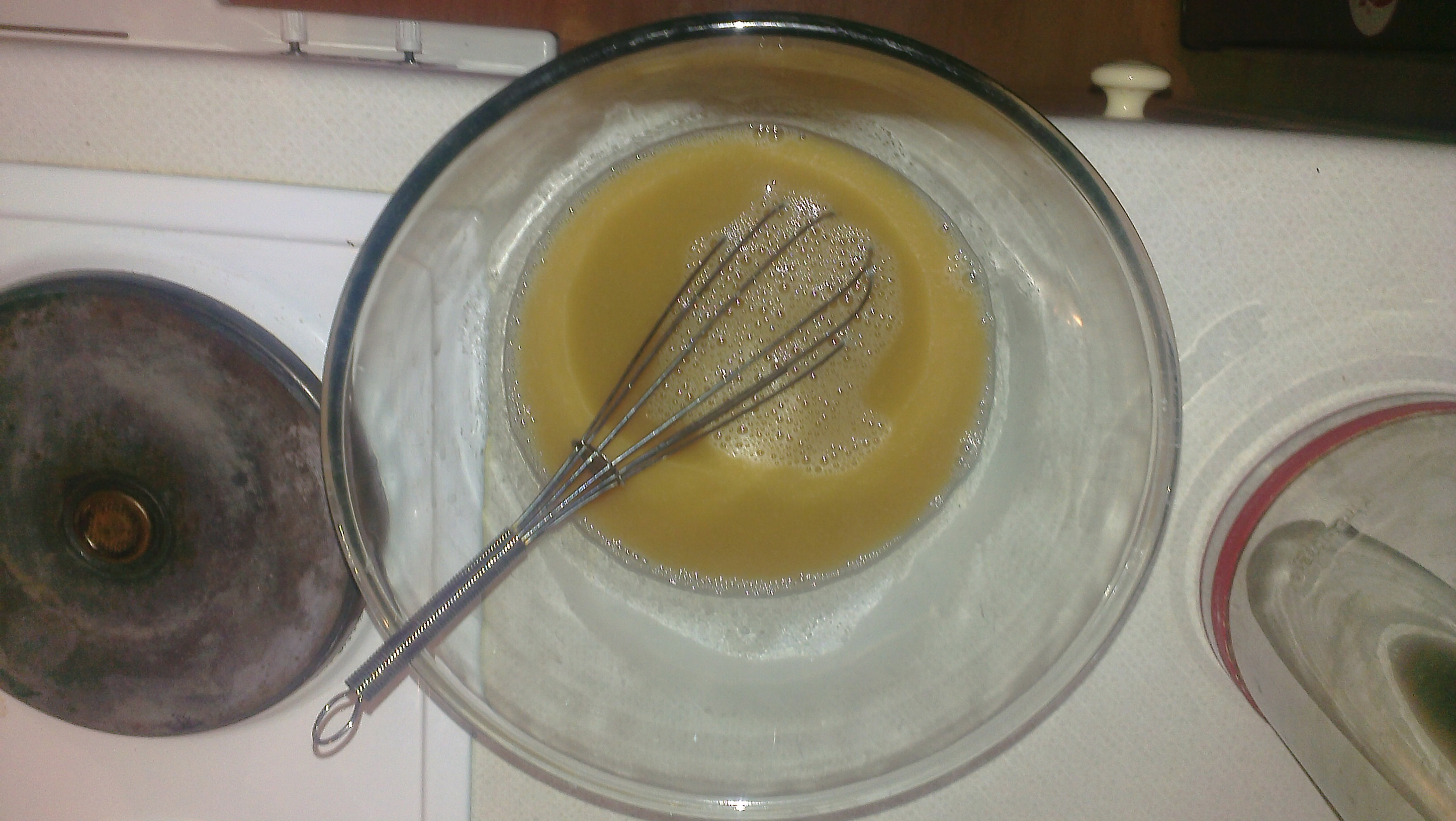
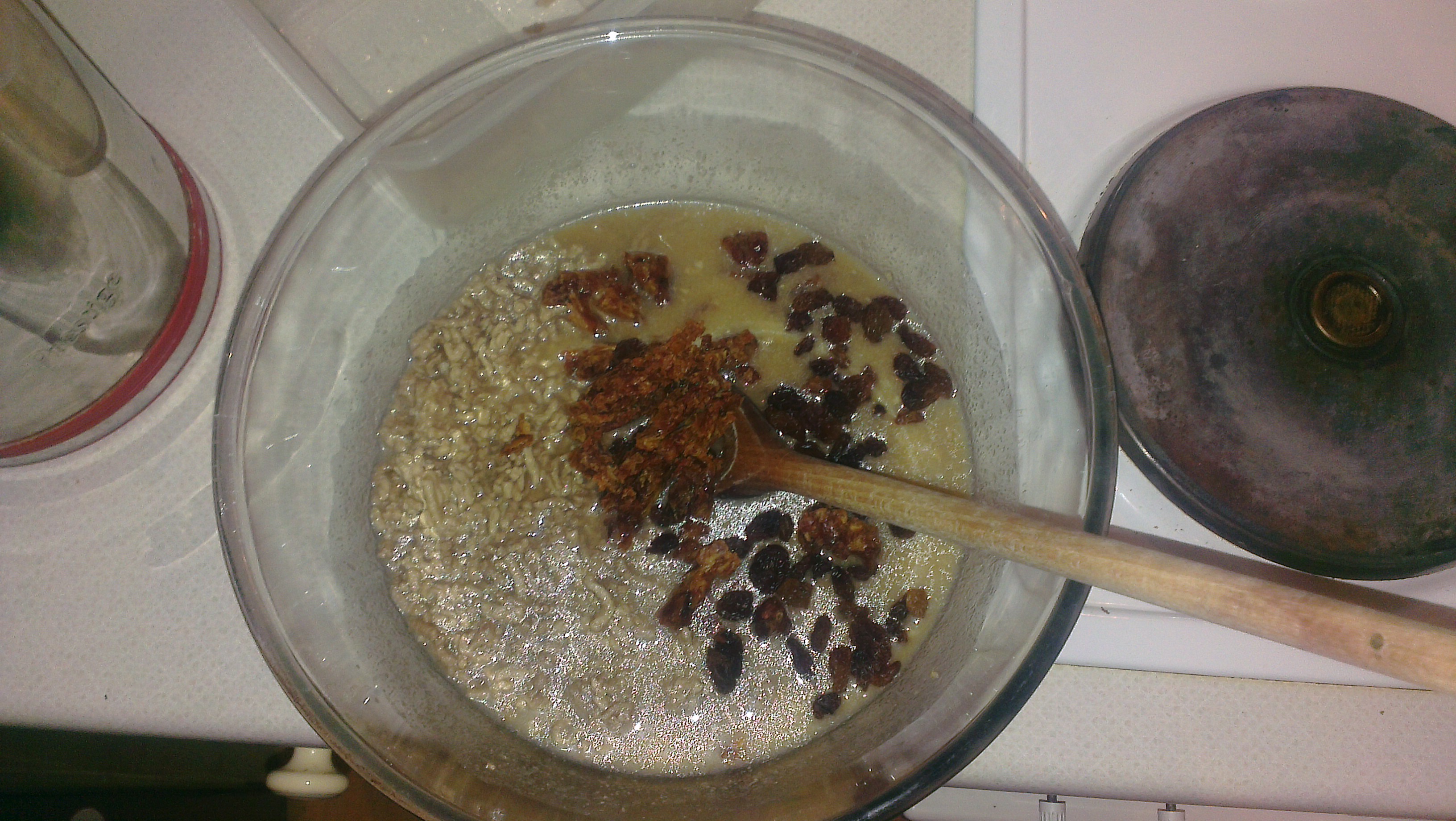
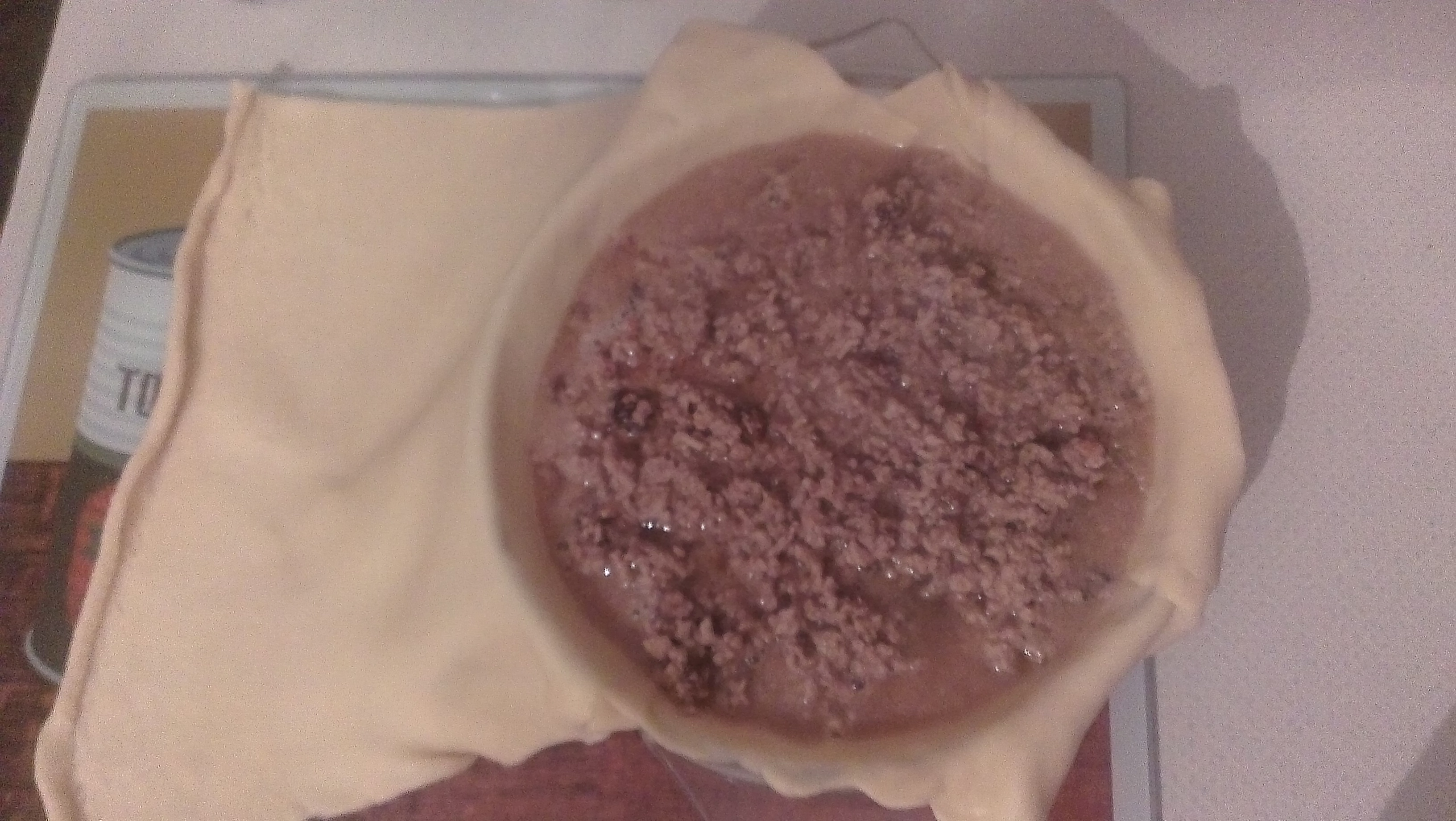
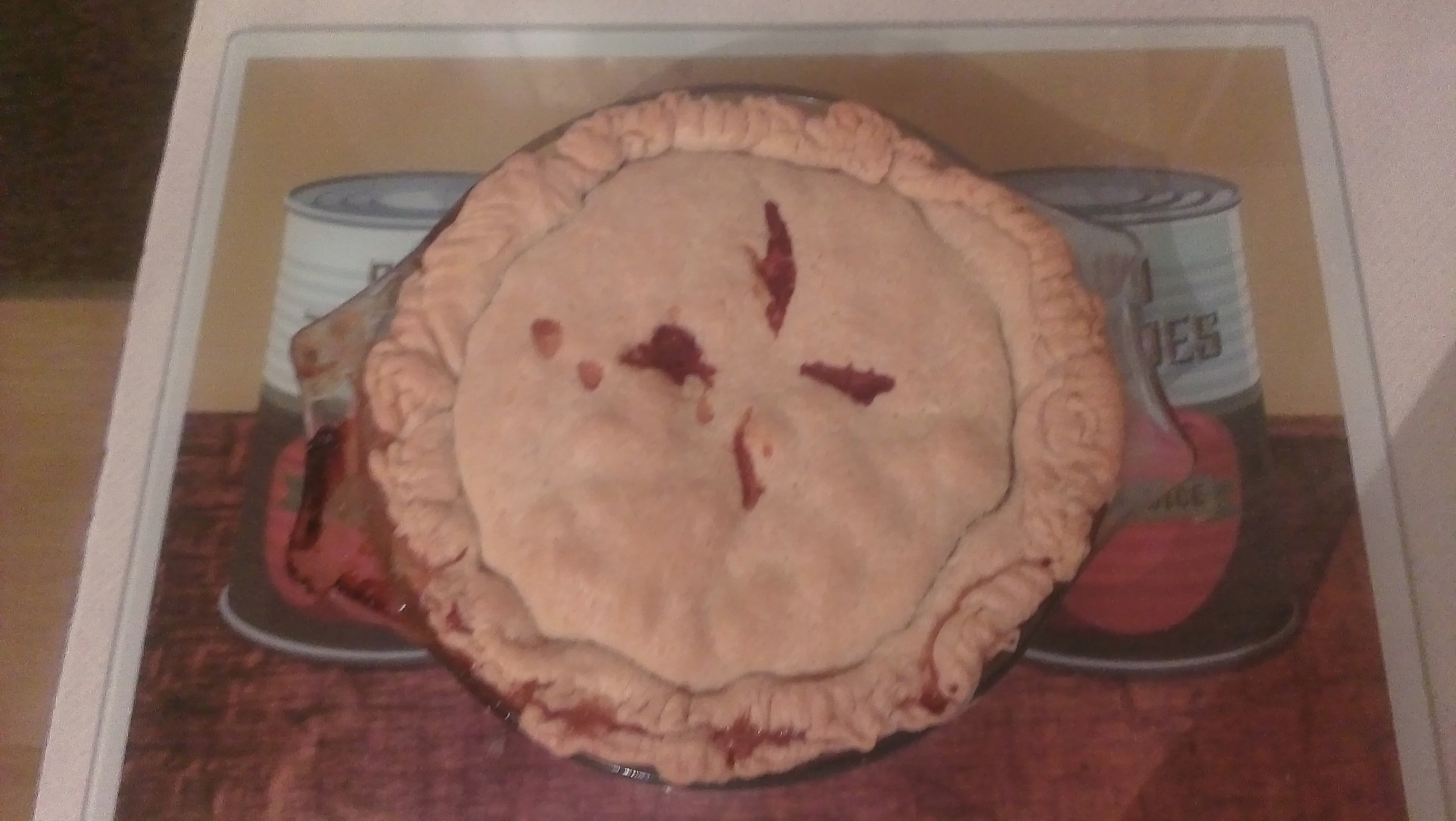
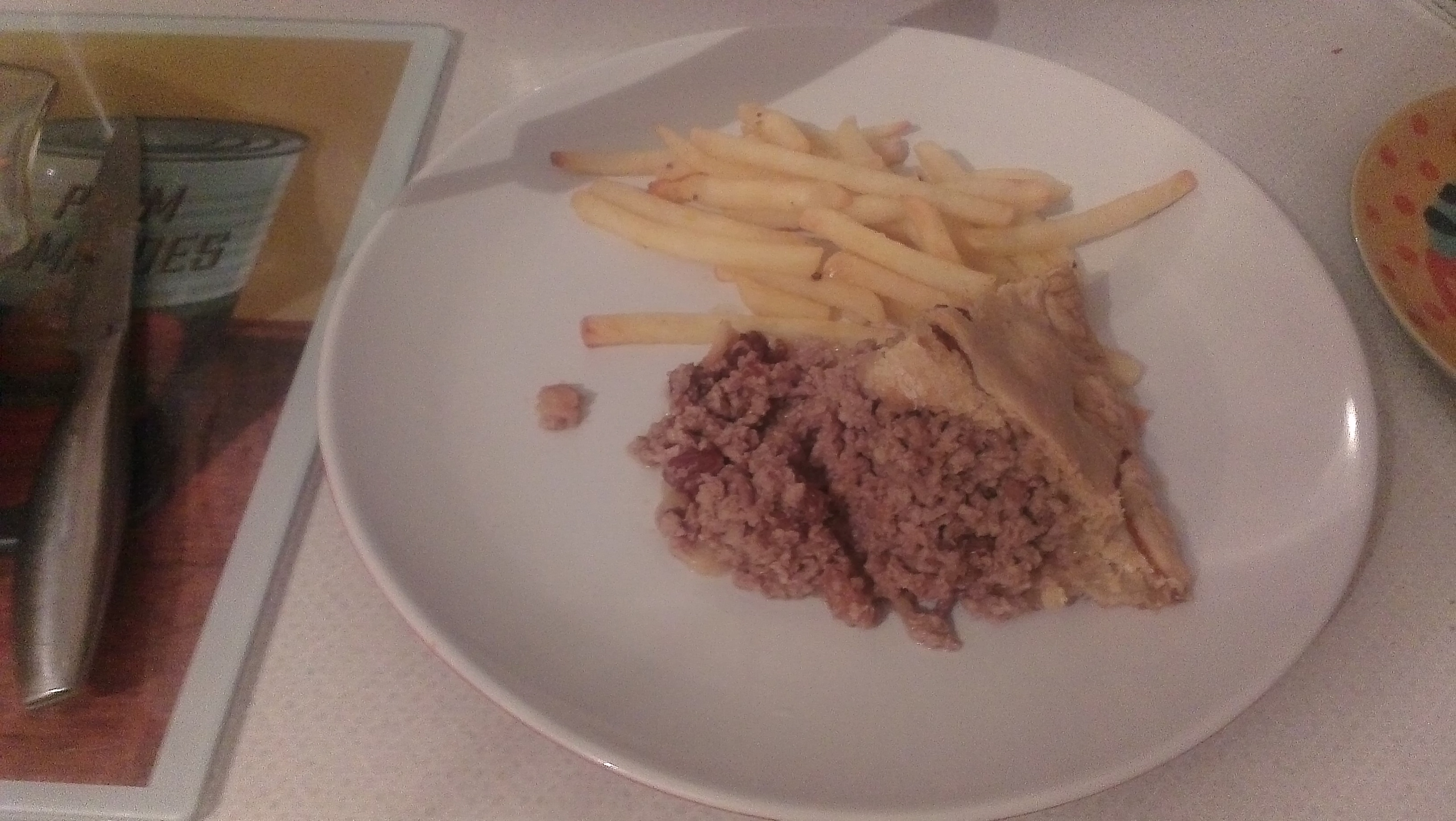

It sounds – intriguing! I do enjoy mixing unusual flavours – and textures – so I think I would like this. I salute your bravery!
Thanks sir! You know I have been eating it for days and it is genuinely nice… Am going to up the ante on the medieval cookery. Perhaps shanghai a swan from off the Cam… 😉